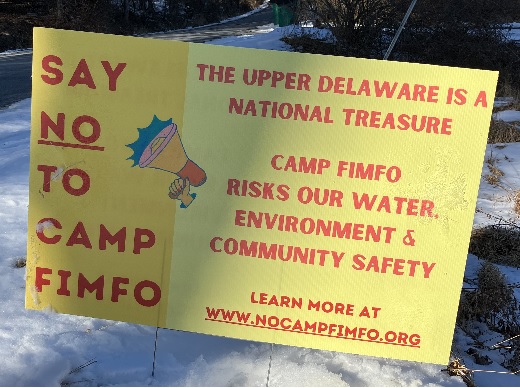Court Rejects Exxon Bid to Dismiss Lawsuit
May 9, 2013This Town Took On Fracking and Won
May 9, 2013By Jon Lentz, City and State, May 8, 2013
Gov. Andrew Cuomo has taken a number of steps to revamp New York’s energy policy since taking office, but critics still have found plenty to criticize in the direction the state is moving.
At City & State’s State of Our State conference in Albany on Tuesday, panelists took issue with the governor’s proposed overhaul of the Long Island Power Authority, a portion of the New York Energy Highway initiative to upgrade transmission lines, the fate of hydraulic fracturing and more.
Matthew Cordaro, a longtime LIPA critic who was appointed to its board earlier this year, said that the governor’s latest proposal to privatize the troubled utility was a “camouflage privatization.”
Earlier this month, Richard Kauffman, the governor’s new energy czar, called for the public utility’s private contractor to take over all of LIPA’s operations while the utility is converted into a holding company, which will own all of its assets but only be responsible for servicing its massive debt. Such a plan might allow LIPA to retain certain benefits, like tax-exempt financing and FEMA reimbursements, that private utilities do not enjoy.
“I don’t think that will work very well,” said Cordaro, a former energy executive who said he was speaking as an independent expert, not a representative of LIPA. “Having gone through this and having dealt with the IRS on privatizations for municipal utilities, the IRS won’t just buy the fact that a private entity can benefit from tax-exempt financing.”
State Sen. George Maziarz didn’t take aim at the governor on the issue of hydraulic fracturing, or hydrofracking, a controversial method of drilling for natural gas that has been under lengthy review by the Cuomo administration. But the lawmaker was blunt in his pessimism that hydrofracking would get the green light, especially after a recent state appellate court ruling upholding the rights of municipalities to ban drilling.
“I think hydrofracking—realistically—hydrofracking is dead in the state of New York,” Maziarz said. “That battle has been lost by the people who are in favor. I think the actors and actresses who make millions of dollars, and live part-time, a very limited amount of time in New York, have won that battle.”
Maziarz lashed out at downstate opponents of hydrofracking, saying they are satisfied with their “Wall Street” lifestyle while blocking a potential boon for economically depressed towns in the Southern Tier, which sits on the natural gas-rich Marcellus Shale.
“They are very satisfied and happy that my constituents and Sen. Libous’ constituents and Sen. O’Mara’s constituents can’t work on Wall Street—they have to work at Wal-Mart,” Maziarz said. “That battle is over, though. We have to move on and move forward.”
Jerry Kremer, the president of the New York Affordable Reliable Electricity Alliance, blasted the governor’s New York Energy Highway over a contingency plan to prepare for the possible closure of Indian Point, a nuclear power plant located about 30 miles north of New York City.
“I compliment the administration for moving forward on the Energy Highway,” Kremer said. “Where the big potholes are, are things like ordering Con Ed to come up with a study on how to spend $800 million, the thrust of which is to get rid of Indian Point, and then pass it on to all the ratepayers across the state of New York, when you have a facility that’s by far and away the most inspected nuclear facility in the nation.”
Kevin Lanahan, the political director at Con Edison, defended the private utility company’s response to Superstorm Sandy by pointing to the storm’s unprecedented nature, and also argued that a rate hike it proposed in January to collect $400 million was needed to help prepare for any future natural disasters.
Cuomo warned Con Edison late last month that regulators would scrutinize more than $600,000 in bonuses for company executives awarded in part for their performance during Sandy. Several top executives returned the money.
“We looked at the most recent storms, and we got ready for what we thought could be a worst-case scenario, which was (Hurricane) Irene,” Lanahan said of the company’s pre-storm preparations. “Well, Superstorm Sandy ended up being four times, five times worse than that, something I don’t think you could have prepared for without making massive investments and having a wild imagination. I can tell you that the 13,000 men and women of Con Edison, most of them regard our response to the storm as their finest hour. Other people, we understand, do not, and we listen very closely to folks like Sen. Maziarz and Assembly member [Amy] Paulin and other legislators in our service territory that I talked to all day long every day for close to two weeks.”



